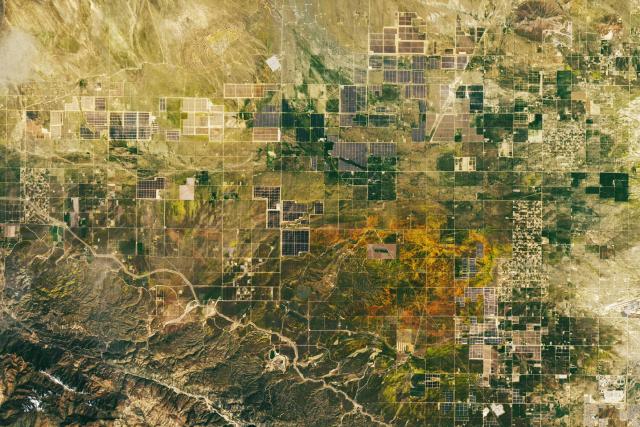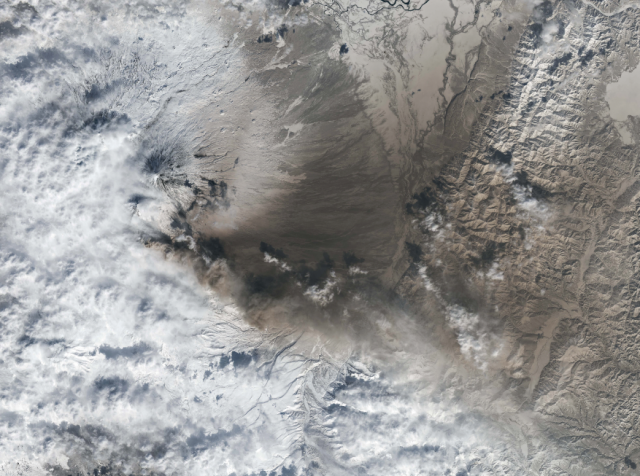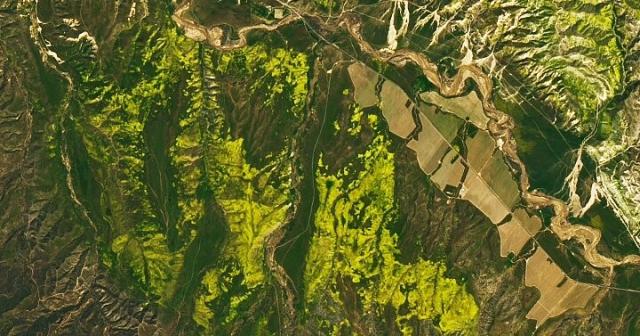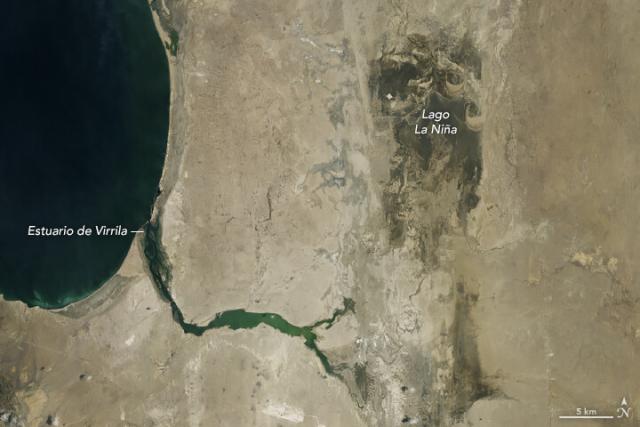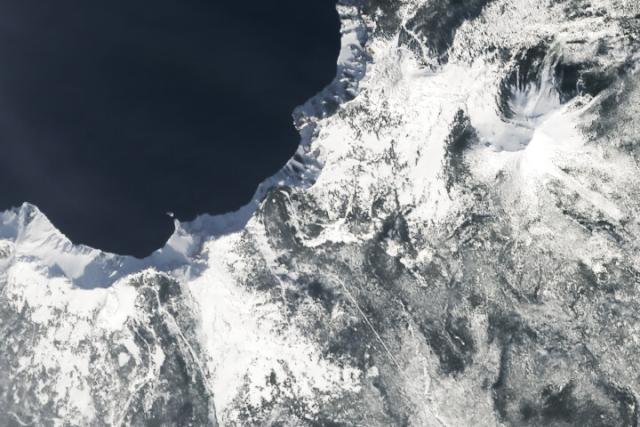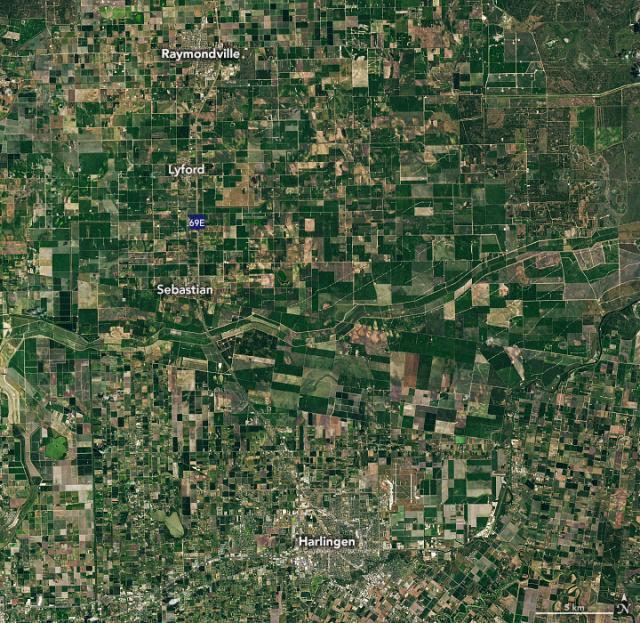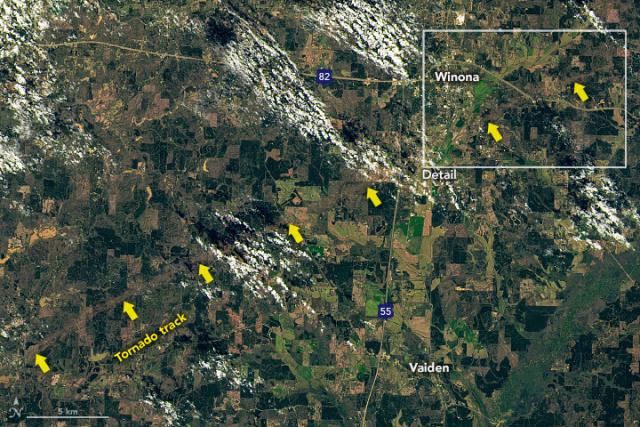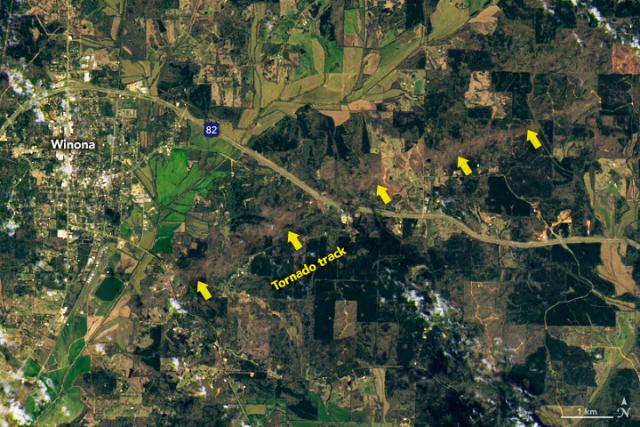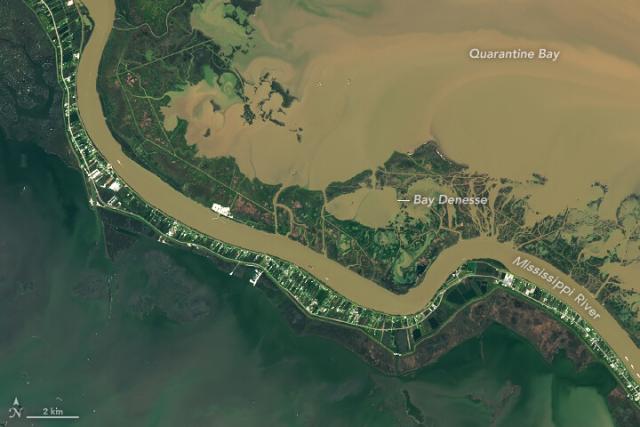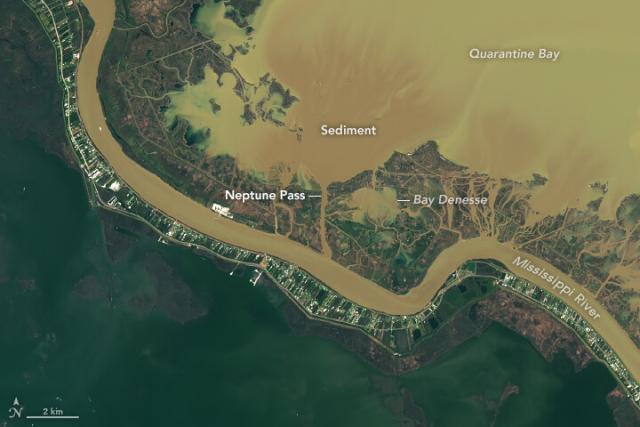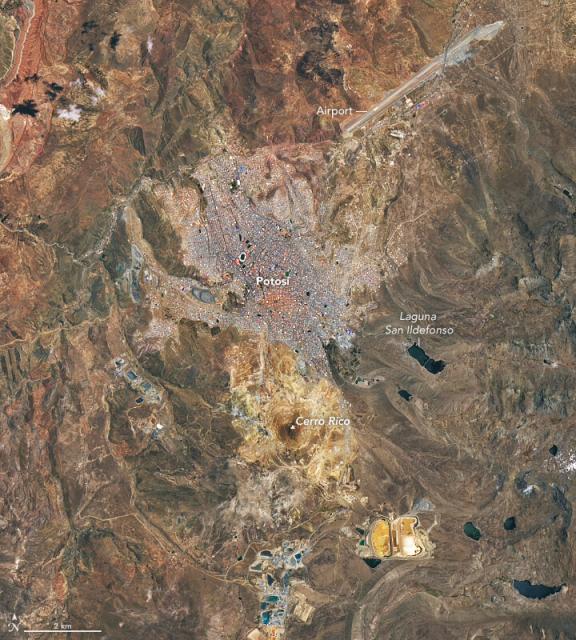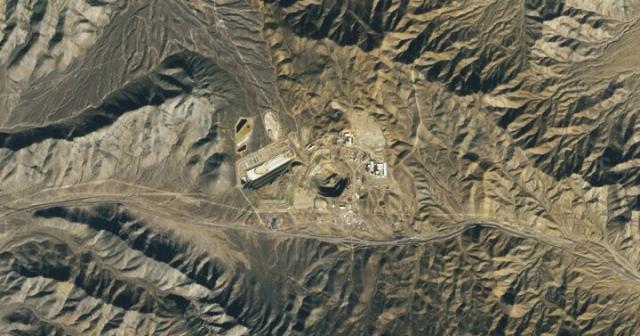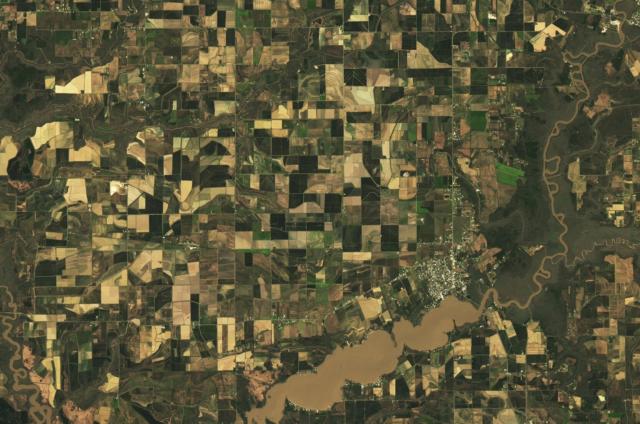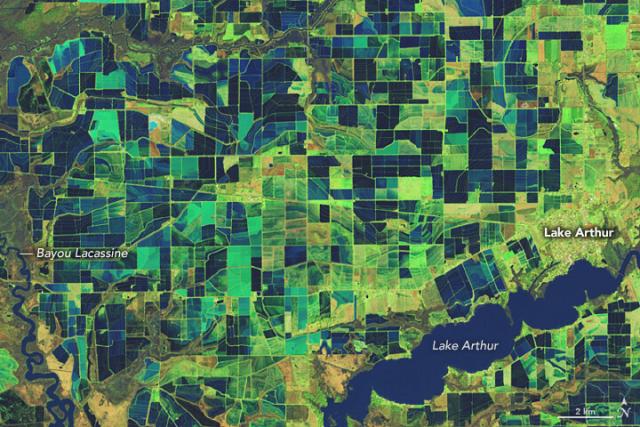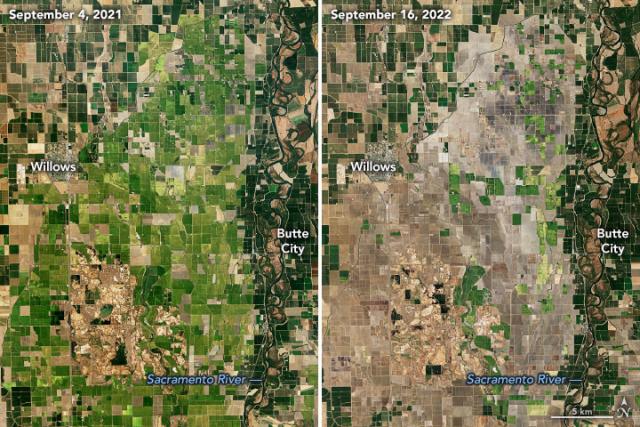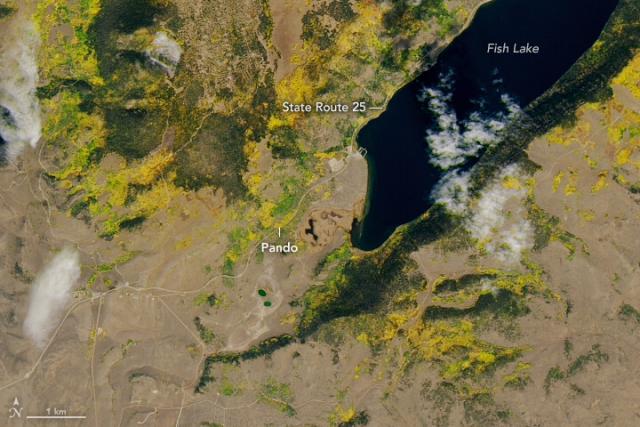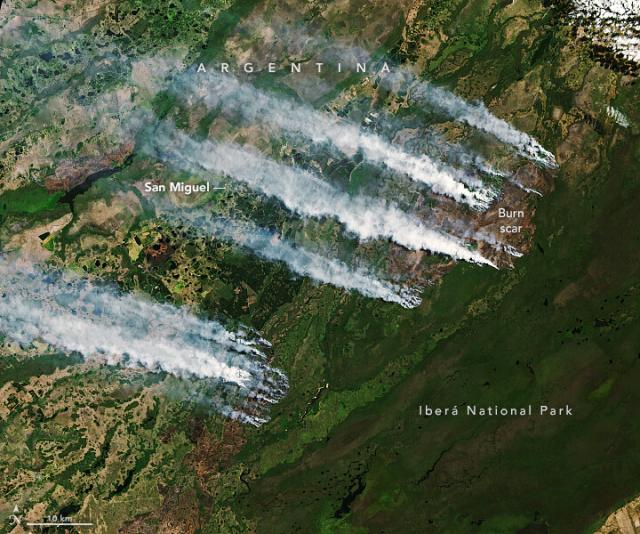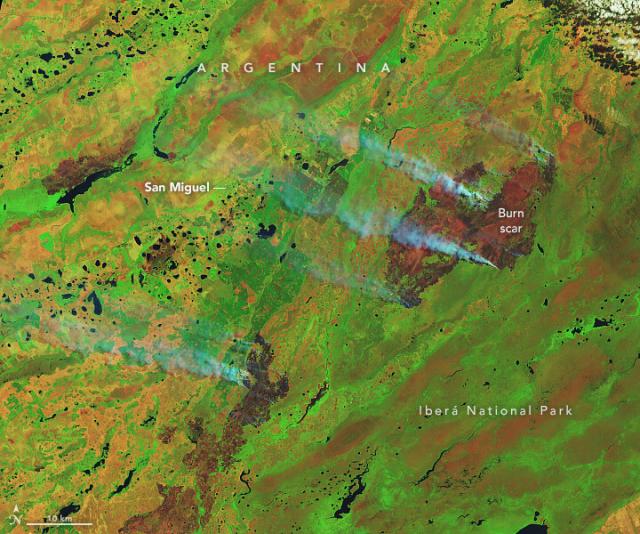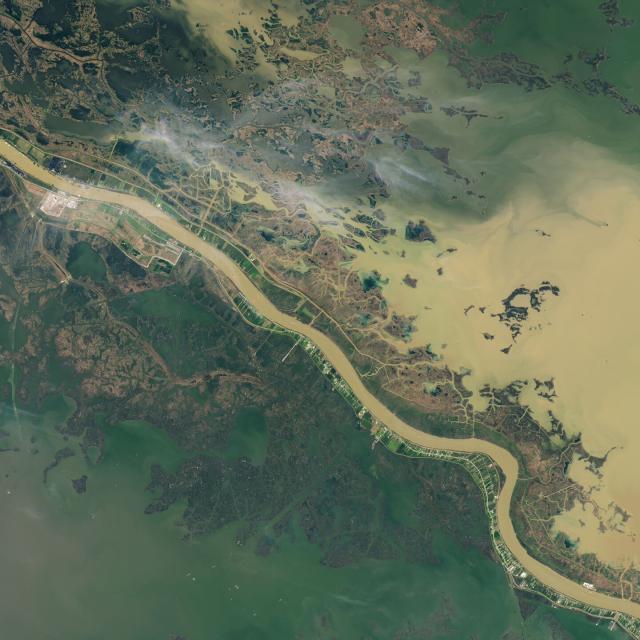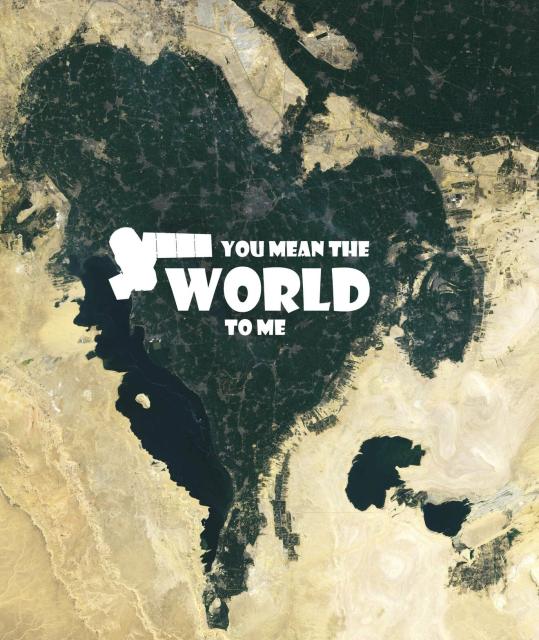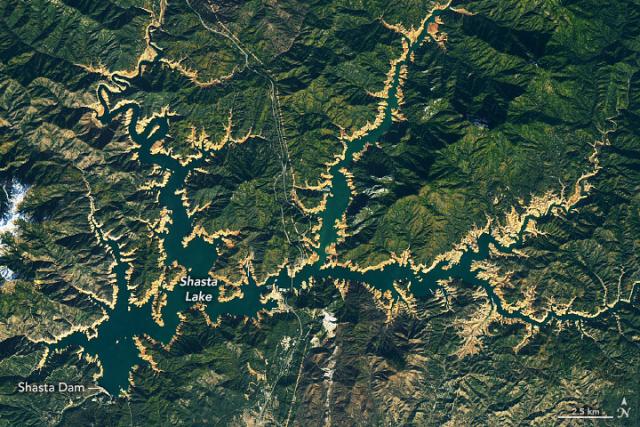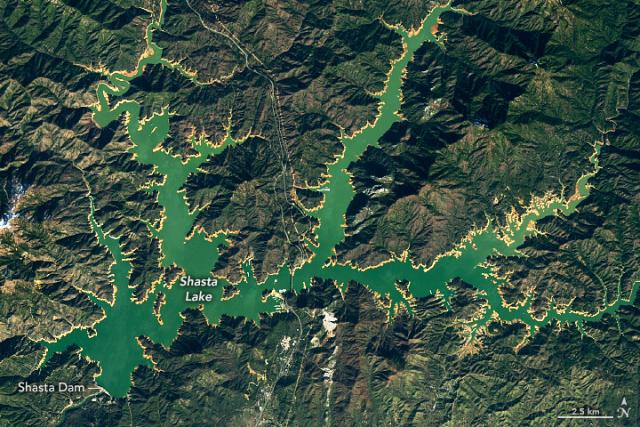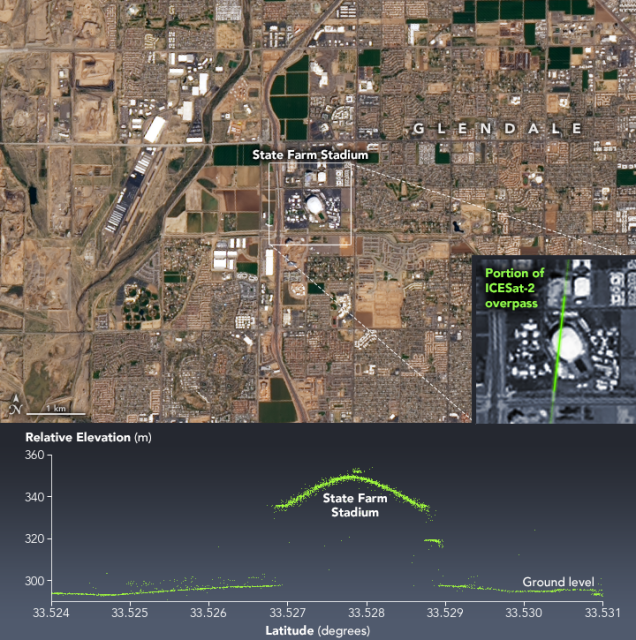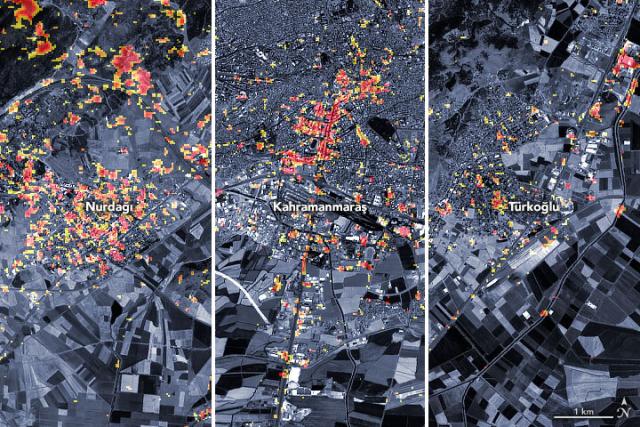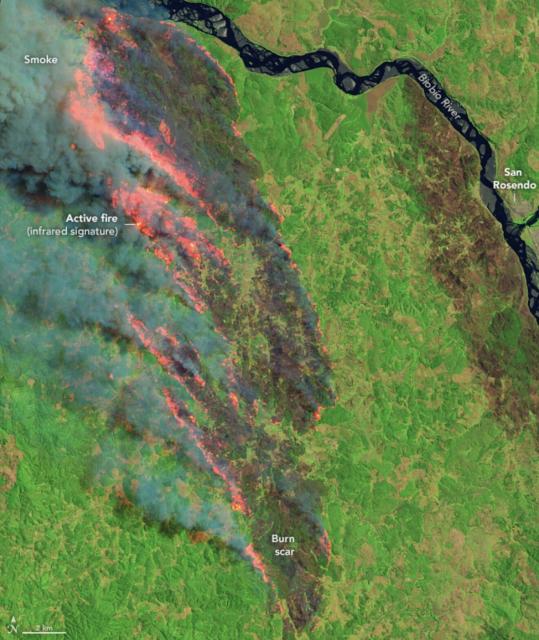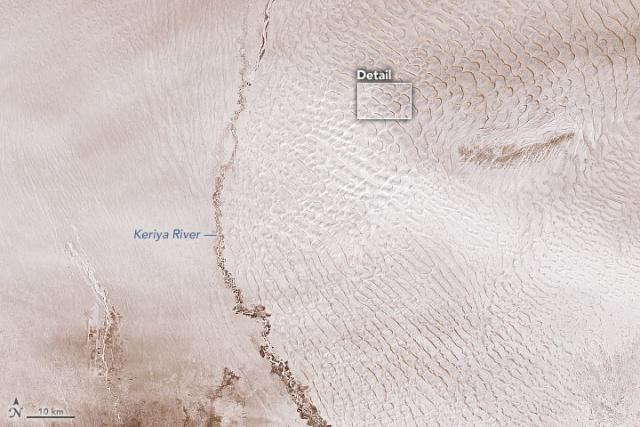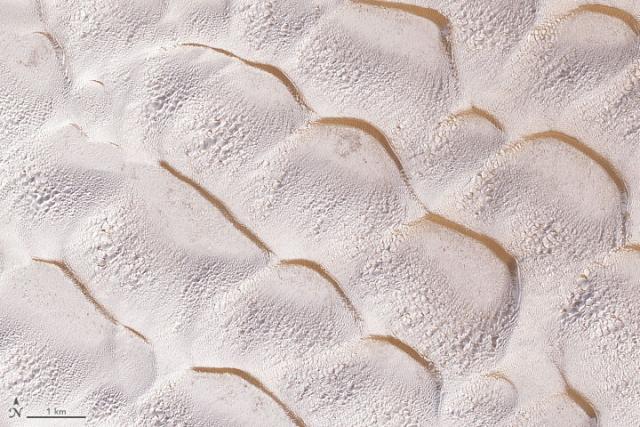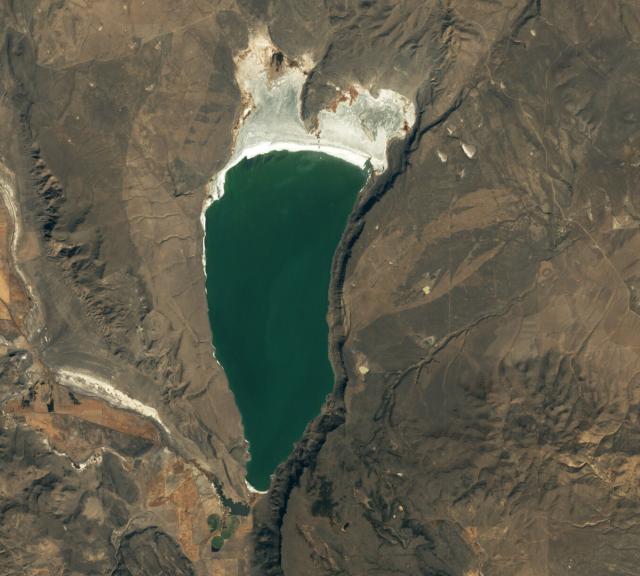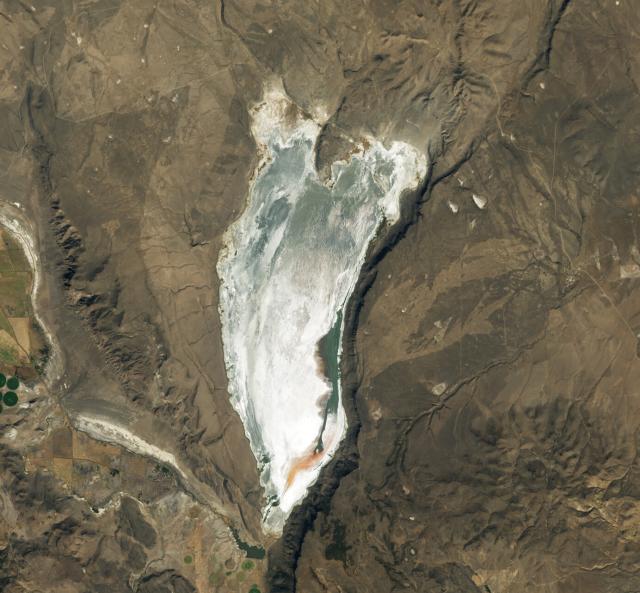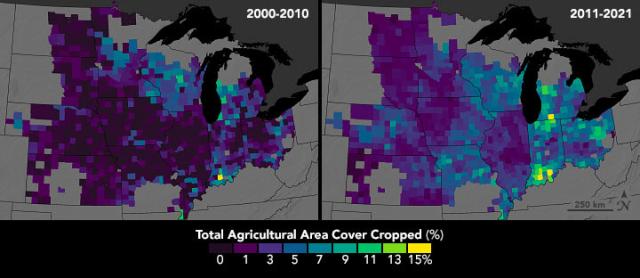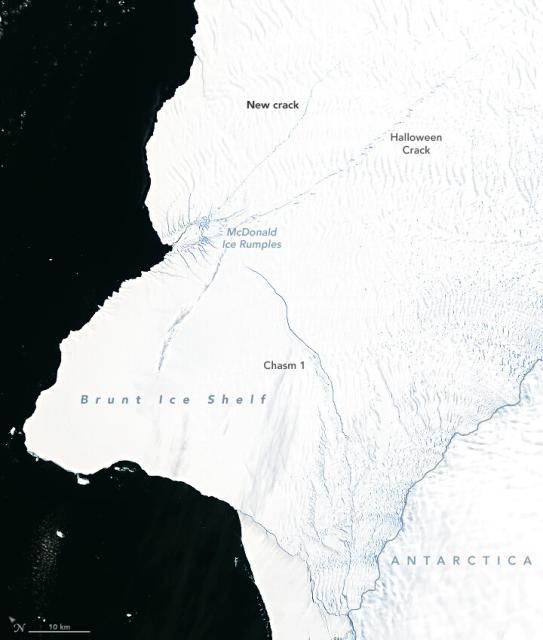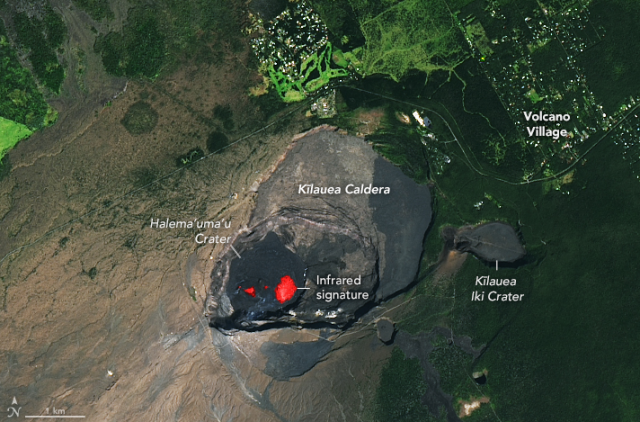Search
Items tagged with: Landsat
Learn how pan-sharpening works: 🔍 go.nasa.gov/3AA2pch
#NASAEarth
Earth Matters - How to Pan-sharpen Landsat Imagery
climate change, global climate change, global warming, natural hazards, Earth, environment, remote sensing, atmosphere, land processes, oceans, volcanoes, land cover, Earth science data, NASA, environmental processes, Blue Marble, global mapsgo.nasa.gov
Pops of Poppies 🌼🌼
After California’s particularly wet winter: a sea of wildflowers. Orange, gold, and yellow flowers flood the valleys and hills of Antelope Valley California Poppy Reserve in this image by #Landsat 8.
Two major eruptions on Russia’s Kamchatka Peninsula blasted volcanic material into the stratosphere within the same week.
The first erupted on April 7, captured in this image by #Landsat 8, with a second, more powerful eruption on April 10. go.nasa.gov/43qAvg6 🌋 🌋
#NASAEarth
Kamchatka Erupts
Two powerful eruptions from the peninsula in northeastern Russia sent volcanic material soaring.go.nasa.gov
Intense winter rains in Southern California blossomed into a magnificent display of wildflowers. #Landsat saw it best in this image of Carrizo Plain National Monument captured on April 6, 2023. ⤵️
A Flood of Wildflowers
Winter 2023 brought unusually intense rains to Southern California, which was followed by a magnificent bloom of wildflowers in spring.go.nasa.gov
As coastal waters heat up, rains and floods are swamping Peru.
These #Landsat images show before (left) and after (right) flood waters from two nearby rivers filled Lago La Niña. 🌧️ go.nasa.gov/40XmxAN
#NASAEarth
Warming Water and Downpours in Peru
As coastal waters heat up, torrential rains and floods are swamping the northern part of the country.go.nasa.gov
Did you guess the puzzler?
It’s Crater Lake in Oregon! At 1,943 feet (592 meters) deep, Crater Lake is the deepest lake in the United States and among the deepest in the world. #Landsat captured this picture of the lake on March 18, 2023.
🔗earthobservatory.nasa.gov/imag…
#NASAEarth
A Clear View of Crater Lake
The lake is especially scenic in early spring when its deep-blue waters contrast with a blanket of snow on land.earthobservatory.nasa.gov
#Landsat captured a tornado’s path of destruction across Arkansas.
Severe thunderstorms tore through the U.S. Midwest and Mid-South where they spawned dozens of tornadoes across seven states. go.nasa.gov/3MlnoHf
#NASAEarth
Tornado Razes a Path Through Wynne
A path of destruction across the Arkansas town is visible to Landsat after another tornado outbreak swept across parts the U.S.go.nasa.gov
A tornado moved through Mississippi on March 24, leaving a 29-mile-long tornado track near the city of Winona.
The tornado’s path is visible in #Landsat satellite imagery captured the next day. go.nasa.gov/42Oq1He
#NASAEarth
Tornado Leaves Path of Destruction in Mississippi
A deadly tornado left a 29-mile-long path near Winona, which is visible in satellite images.go.nasa.gov
We mourn the loss of Virginia T. Norwood, known as the “Mother of Landsat.” She designed the first space-based multispectral scanner that flew on the first #Landsat. Her impact lives on in how we see Earth from space.
Bidding Farewell to Virginia T. Norwood, the Mother of Landsat | Landsat Science
Virginia T. Norwood, a founding figure in the field of satellite land imaging, died on Sunday, March 26, 2023, at age 96.https://landsat.gsfc.nasa.gov/article/author/lrocchio/#author (Landsat Science)
#NASAEarth
Sunny Days in Morocco’s Ouarzazate Basin
The dry, sunny basin is the site of a solar power station that supplies electricity to nearly 2 million Moroccans.go.nasa.gov
Once a small canal, Louisiana's Neptune Pass has widened to become a major channel in the last six years.
#Landsat 8 captured these images before the canal widened (left) in 2019 and after in 2023 (right).
Full story: go.nasa.gov/3nc1rzI
#NASAEarth
The Widening of Neptune Pass
The pass now has a flow five times that of New York’s Hudson River.go.nasa.gov
Potosí, the Bolivian mining city and one of the highest cities in the world, grew at the foot of an eroded volcano riddled with silver.
#Landsat 8 captured this image of Potosí and the nearby mountain, Cerro Rico, on November 24, 2022.
Potosí and Cerro Rico
The Bolivian mining city—one of the highest cities in the world—grew at the foot of an eroded volcano riddled with silver.go.nasa.gov
The mountains of southeastern California are home to a large rare-earth element mine.
#Landsat 8 captured this image of the Mountain Pass Mine, with an open-pit area that extends 800 meters (2,600 feet) across and more than 180 meters (590 feet) deep. go.nasa.gov/3FqrY2o
#NASAEarth
What’s for dinner?
The #Landsat mission observes crops from space, helping farmers make decisions about how to better grow food. In this data sonification, see and hear how crops in the U.S. have changed over 20 years.
How #Landsat data is used: go.nasa.gov/3T5z6GZ
#NASAEarth
From Space to Farm
Farmers rely on the accuracy of a crucial NASA and USGS mission, Landsat, to make decisions about crops. Those decisions have far-reaching implications that can impact what you see on your dinner plate!Sarah Loff (NASA)
The Mississippi River Valley is home to most of the rice farms in the United States. 🌾🍚
This #Landsat 9 image shows the patchwork of flooded rice fields in southwestern Louisiana on February 3, 2023. go.nasa.gov/3LmwPFw
#NASAEarth
Our view from space can also show us how crops like rice are growing.
Satellites like #Landsat and Terra helped map a drop in rice acreage during a drought in Sacramento’s Central Valley – normally the largest rice-growing region in California.
After torrential rains in São Paulo, a state in southeast Brazil, #Landsat images revealed widespread landslides in the coastal São Sebastião municipality.
This Feb. 26 image shows landslides across the hilly landscape between Jaqueí and Praia da Baleia. go.nasa.gov/3EVK3VZ
#NASAEarth
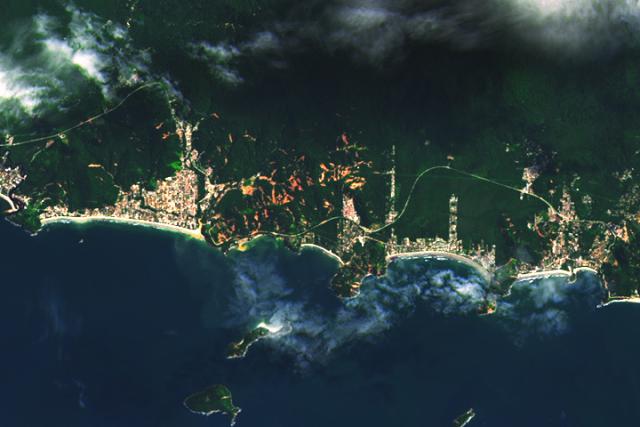
Landslides in São Paulo, Brazil
After torrential rains, satellite images revealed widespread landslides in the Brazilian state’s coastal municipality of São Sebastião.go.nasa.gov
Overgrazing by deer poses a threat to a giant quaking aspen tree colony in Utah that scientists have named Pando.
In this image by #Landsat 9, Pando’s yellow leaves are visible for about 200 meters on either side of State Route 25. go.nasa.gov/3KPIeNU
#NASAEarth
Saving a Forest of One
Overgrazing by deer poses a threat to a giant quaking aspen tree colony in Utah—one of the largest organisms in the world.go.nasa.gov
Scientists are using satellite images to locate landslides following the devastating earthquakes in parts of Türkiye and Syria on February 6, 2023.
This #Landsat 9 image shows small landslides along a valley east of Sarıseki, Türkiye, on Feb. 14. go.nasa.gov/3IROLGI
#NASAEarth
Landslides in Türkiye
Scientists are using satellite images to locate landslides following the powerful earthquakes that struck in early February.go.nasa.gov
Fueled by a heatwave and prolonged drought, fires continue to burn in the Iberá National Park in northeastern Argentina.
The fires began in late December 2022 and were still ablaze when #Landsat 9 took these images on Feb. 19, 2023. go.nasa.gov/41efMuW
#NASAEarth
Fires Burn in Argentina’s Iberá National Park
Fueled by a heatwave and prolonged drought, fires burned the protected Argentine oasis, home to capybaras and jaguars.go.nasa.gov
Happy Mardi Gras! 💜💛💚
During Mardi Gras season in 2012, the Mississippi River broke through its eastern bank and created a new channel to the Gulf of Mexico, the Mardi Gras Pass. #Landsat 8 recently captured this image of the pass.
Learn more: go.nasa.gov/41km8t0
#NASAEarth
Mardi Gras Pass
This free-flowing distributary reconnects the mighty Mississippi to the wetlands of Louisiana.go.nasa.gov
Are you ready for the #SuperBowl? We are! 🏈
#Landsat took this photo of State Farm Stadium in Glendale, AZ.
And in 2020, NASA's ICESat-2 satellite measured the relative elevation of the stadium, which stands over 200 feet tall! go.nasa.gov/3JZLaak
#NASAEarth
A Super View of Arizona
State Farm Stadium, the site of Super Bowl LVII, stands out from the surrounding desert landscape when viewed from above.go.nasa.gov
Did you get it right?
The #Landsat 9 images show a snow-covered desert landscape and sand dunes near the Keriya River in the Xinjiang region of western China, taken after a powerful winter storm earlier this month. ❄️go.nasa.gov/3JvzlZu
#NASAEarth
Wintry Dunes on Earth and Mars
Dunes on both planets occasionally get blanketed with ice and snow—except on Earth the white stuff is frozen water and on Mars it’s often frozen carbon dioxide.go.nasa.gov
Update on berg A-81🧊
This #Landsat image from Jan. 25 shows the A-81 berg on the left and the new front of the Brunt Ice Shelf on the right.
According to a @NASAGoddard glaciologist, satellite images show the front has retreated 20 km since 1973. go.nasa.gov/1333
#NASAEarth
Earth in blues and browns 💙🤎
Nevada’s Clayton Valley, the site of the only active lithium mine in the United States, is shown in this #Landsat 9 image captured on December 8, 2022.
⛏️: go.nasa.gov/3ke4eXx
#NASAEarth
Racing to Mine Lithium
One way of harvesting the valuable metal involves the use of evaporation ponds that concentrate the substance into lithium-rich brines.go.nasa.gov
The Kilauea volcano in Hawaii began erupting on Jan. 5, 2023 according to @usgs.
This image made from #Landsat 8 data shows a satellite view of the volcano from Jan. 11 overlaid with the infrared signature (in red) from the lava’s heat.
🌋: go.nasa.gov/3IRSVhZ
#NASAEarth

